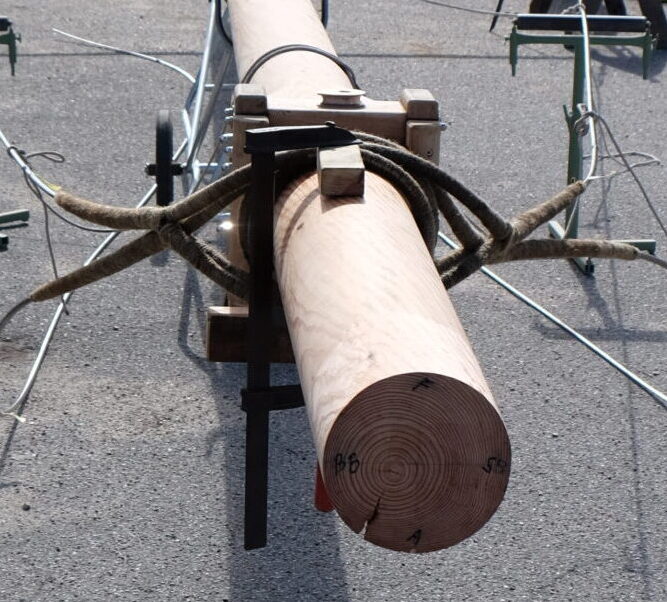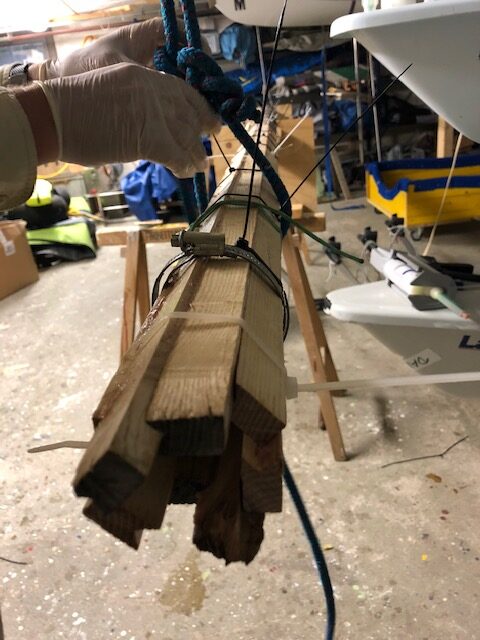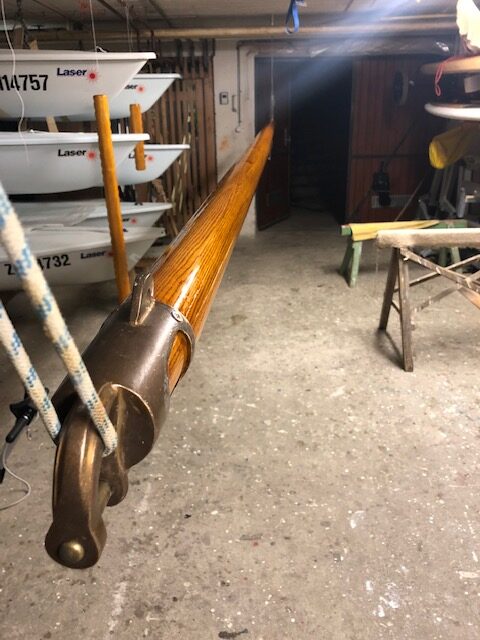Practically all materials exposed to the elements are prone to decay. Sunlight (ultraviolet), corrosion (saltwater) and microbes are continuously challenging our efforts to protect valuable assets.
Here we talk about wood. There are many different types of wood. They come in different qualities too. Always try to get the best quality when building boats.
The oldest and simplest way of making a spar is to take a tree and make it round. If you have a mast that is basically made from a tree planned and sanded round you will have many longitudinal cracks in it from drying. They can be quite deep and offer pockets that are excellent for holding moisture and thus inviting rot. The problem with big pieces of wood is, that they keep working as moisture around them changes. It is not a good idea to fill the cracks with something hard like epoxy or concrete. The expanding and contracting of the surrounding wood will unfailingly crush the wood fibers and open a crack between the filler and the wood. The crack will also deepen because it gets wedged apart when the edges push against the hard filler.

What can we do?
One way of dealing with this is to leave the wood untreated and let the log do its expansion and contraction cycles. As long as the wood can dry in between it is probably going to be ok. If your boat is in cold climates with short summers and cold winters where you store your spars away from the elements for many months this might just be the easiest solution. It will take a long time to degrade the wood. It is not very aesthetic since the wood surface will get grey and can develop splinters just like the good old telephone poles from yesteryear.
On the schooner EMMA we opted for two ways to protect spars.
The full masts and the bow sprit are essentially made from entire trees shaped to suit. They had many years of drying time during which the typical radial cracks manifested themselves. When it came time to work on them we first treated them with a water-based fungicide that was poured into the cracks and left to dry. After that we made liberal use of a penetrating oil formulated for wood conservation (Owatrol Decks Ole D1): The oil seeps into the cracks and actually also fills the wood grain to some extent. It supposedly displaces moisture and coats the cell walls as it dries, making the wood more resilient against microbes. After that we started lacquering the spars with a compatible clear lacquer (Owatrol Decks Ole D2). No need to fill the cracks with lacquer, we deal with them towards the end. After 6 or 7 coats of lacquer we filled them by working in some soft waxy petroleum jelly based gunk which wine makers use to seal the access hatches of their big barrels before filling them with wine. The point is, that the barrels don’t leak out their precious content but that as the wood swells, any excess gunk is simply pushed out of the crack without damaging the surrounding wood. You can use the stuff to seal leaky plank seams too, even if the boat is already in the water. And you can even paint or lacquer over it. I have used the stuff time and again after winter haul out of our vintage cruiser racer to shorten the period it takes to seal up in spring.
For spars that are dimensionally more stable I prefer a different treatment. In order to save weight, I like to build hollow gaffs, spinnaker or whisker poles and any of the fancy clubs you might want to hoist up high into a traditional rig with the intention of increasing sail area aloft.

Since these spars are relatively thin and glued together from well dried staves you can build them from stock that has no drying cracks. But if you leave them untreated they will without doubt start warping and cracking up. You have to protect them with paint or lacquer. For these applications we used a fairly new lacquer called Awlwood from AkzoNobel. It is essentially a two-component lacquer where the second component is the moisture in the air. The primer comes clear or in different stains. It is very liquid and seeps deep into the wood grain thus providing a good hold for the lacquer that goes on top. After the recommended 8 coats the precious spars are sealed with a tough coat that is quite resilient against abuse.


